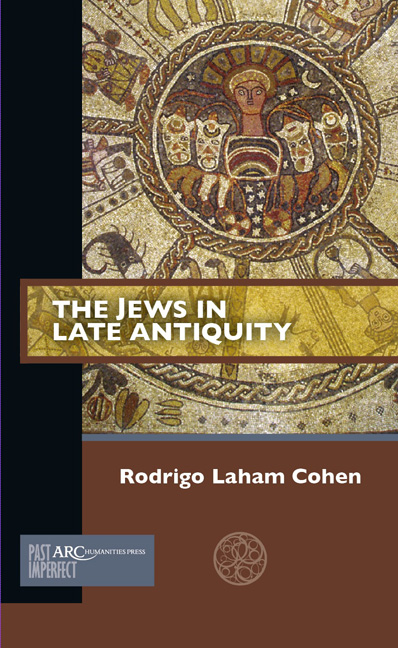Chapter 3 - North Africa
Published online by Cambridge University Press: 28 January 2021
Summary
In 1937 Stefan Zweig wrote The Buried Candelabrum, a short and beautiful novel that recreates the story of the menorah of the Second Temple. In fact, the Romans stole the candelabrum after the destruction of Jerusalem in 70 CE. According to Procopius, it was appropriated by the Vandals during the sack of Rome in 455. He also claimed that the menorah was taken again by Belisarius and carried to Constantinople when the Vandal kingdom was conquered in 533– 534 (De bello Vandalico, IV, 9). Subsequently, all trace of the candelabrum was lost. In the novel, Zweig envisioned Jews burying it. The history of the menorah is opaque but interesting because it connects three central regions in late antiquity: Italy, North Africa and the Eastern Roman Empire. This chapter is centred on the Jews of North Africa.
Before starting, it is necessary to clarify that Egypt will be analyzed separately. This is not an arbitrary decision: as most scholars recognize, there were great differences—geographical, economical, and cultural—between the North African regions. Furthermore, we will focus on the Roman province of Africa Proconsularis, mainly in the city of Carthage and its surroundings, but also Cyrenaica, Numidia, and Mauretania.
Archaeological and epigraphic evidence is scarce. The Naro synagogue (now HammamLif in Tunis, thirty kilometres from Carthage) was discovered in 1883 and was probably built between the fourth and sixth centuries CE. It is the only late ancient synagogue uncovered in Africa. It was a large synagogal complex, comprising more than ten rooms. Moreover, only one chamber can be directly connected to Judaism due to surviving inscriptions and symbols. In fact, two small menoroth were found among common North African motifs on the mosaic pavement. Epigraphic evidence found in situ confirmed that the building was a synagogue (Le Bohec 1981a, 176– 79; Stern 2008, 225– 44). F urthermore, lamps decorated with menoroth were also found at the site. The building reveals the importance of the local Jewish community and the adoption of ordinary North African—late Roman—art in synagogal decoration. As Karen Stern states, Naro's synagogue shows that Jews, Christians, and pagans used the devotional vocabularies of their immediate environment, incorporating their own particularities (2008, 253).
- Type
- Chapter
- Information
- The Jews in Late Antiquity , pp. 25 - 32Publisher: Amsterdam University PressPrint publication year: 2018



